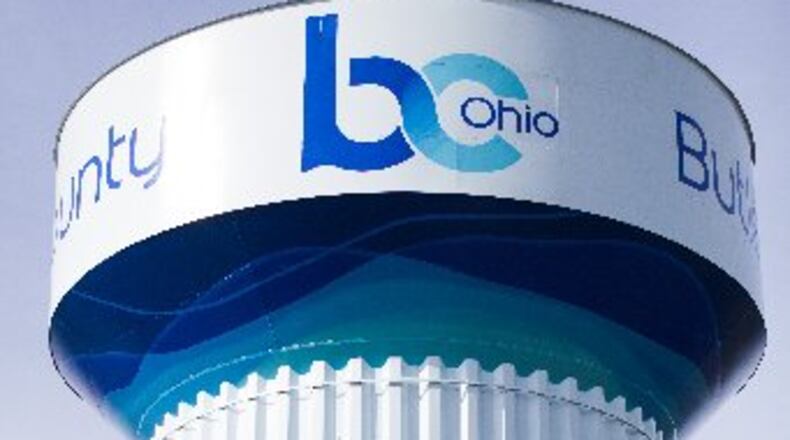A year ago the commissioners agreed to take a rate 3% increase — the last time rates were adjusted was 2009 when they lowered them — last June. And the water rates increased another 2% and sewer rates 3% in January.
Water & Sewer Director Martha Shelby said the first increase last year is reflected in the survey and the January bump will show up next year on the ranking. She told the Journal-News “over the last seven years, the survey participants have experienced a total 24% increase to the average cost compared to the Butler County Water & Sewer’s 3% rate increase.”
She said even with the rate increases in the current pandemic-induced inflationary climate, it’s tough to manage but said “it’s too early to predict” if she needs to ask the commissioners to consider another hike.
“We are really starting to see the pinch of inflation and when we compare to everybody else, everybody is in that same situation,” Shelby said. “I don’t think we’re going to drop positions (in the ranking) but I think you’re going to see all utilities go up in the future because all of our supplies, treatment materials and capital projects are experiencing inflation.”
Commissioners Don Dixon and T.C. Rogers said they have no appetite for raising rates again.
“I don’t think so,” Dixon said to raising rates. “I understand that, but we’ve just got to manage it. It’s just a crazy economy. I keep thinking we’re going to see some relief in some of these prices, we have somewhat. It’s too early to pull the trigger on something like that.”
The county and its six cities provide water and sewer service to their residents and businesses. Between 2019 and this survey, quarterly bills increased as follows: Butler County (2.47%), Fairfield (15.2%), Hamilton (8.4%), Middletown (10.3%), Monroe (9%), Oxford (1.7%) and Trenton (4.4%).
The county gets its water from the city of Hamilton and Greater Cincinnati Water Works. The county renegotiated its water purchase contract with Hamilton in 2014 and saved about $28 million over the life of the new deal.
The new rate was locked in until 2022, then the rates could go up annually by the consumer price index or 3.25%, whichever is less. Shelby said they are locked in at the 3.25% increase rate until 2025.
There is a $125 difference between the highest and lowest bills countywide, and Hamilton’s sits at $296 quarterly. Hamilton Executive Director of Infrastructure Edwin Porter said the systems vary widely so you can’t compare costs without context.
Hamilton was founded in 1791 compared to Fairfield where infrastructure is from the 1950′s, so the life expectancies and work needed varies wildly, so some jurisdictions “don’t have the high capital cost of the replacement,” Porter said.
“We may share a geographic region but each water system is so significantly different,” Porter said. “Everything from what’s the source of the water, what’s the treatment process, what size is your distribution system.”
Porter said they took the new contract with the county into consideration when they instituted a new five-year rate structure. The water rates increase 8% in the first three years — beginning this year — and drop down to 4% the final two years. For sewer the rates started out at 5% and jump up to 9% in 2026 and 2027.
He said inflation has driven costs up — the price on one chemical they use heavily has jumped 25% — and capital improvement needs drove the increases.
“We tried to look at where our capital needs were really falling out in terms of when we think we had to invest the capital,” Porter said. “We know we have more capital we need to make in water now, and then in waste water we have some capital improvements that need to be put in place but we’ve got some time.”
Fairfield’s 15.2% increase over the last five years is also due to some major projects. Public Utilities Director Adam Sackenheim said they just finished a $6 million citywide smart metering project, they are in the process of building a new $5 million water storage tank on Port Union Road and just opened bids on a $6 million-plus wastewater treatment plant process upgrade.
“It’s unfortunate that they all hit kind of at the same time but they did,” Sackenheim said. “The water tower was needed to support continued industrial and commercial growth in the Port Union area, the metering project was needed because the meter was 25 years old and was losing some accuracy and the wastewater project was needed to meet regulatory limits.”
He said they are in year three of a five-year rate increase plan with 3% hikes each year to cover operations and cover the debt for the capital projects. He said their customers don’t generally balk at paying more.
Middletown City Manager Paul Lolli said he has a meeting scheduled with the public works department next week to discuss hiring a firm to do a water and sewer rate study. He said they have also placed an electric aggregation question on the May ballot to help offset higher city utility costs.
“It should lower your energy rate and we’ve doing this to try and help offset coming water and sewer rate increases,” Lolli said. “Our water fund is getting very thin, our sewer fund is getting better but we know we are going to have to go for increases to make sure our water and sewer systems are fully functional and safe in the future.”
About the Author

